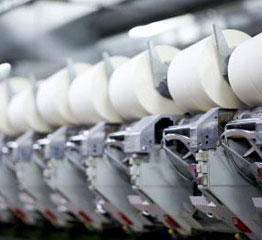Natural fibers are derived from nature, plants, and animals. They can be used alone or in conjunction with other fibers for use in narrow tapes and webbing.
 Natural fibers are found in a raw state in plants and animals. Natural fibers include hemp, bamboo, cotton, wool, silk, and fibers of Polylactic Acid (PLA) and Polyglutamic Acid (PGA) polymers made from renewable sources such as corn. Most natural fibers (hemp, bamboo, cotton, and wool) are spun from short (staple) fibers into a sliver, made into roving, and then spun (entwined) to form a continuous long fiber that may be woven, braided, or knitted into a fabric. The resulting fabric usually has a “fluffy” appearance, unless finished, serged, or otherwise treated, that results from the short staple fibers from which they were produced. Silk is a naturally spun long polymer that is very similar to man-made fibers. The resulting fabrics are shiny, smooth, and have a much softer hand. PLA and PGA are natural fibers that are polymerized by an industrial process.
Natural fibers are found in a raw state in plants and animals. Natural fibers include hemp, bamboo, cotton, wool, silk, and fibers of Polylactic Acid (PLA) and Polyglutamic Acid (PGA) polymers made from renewable sources such as corn. Most natural fibers (hemp, bamboo, cotton, and wool) are spun from short (staple) fibers into a sliver, made into roving, and then spun (entwined) to form a continuous long fiber that may be woven, braided, or knitted into a fabric. The resulting fabric usually has a “fluffy” appearance, unless finished, serged, or otherwise treated, that results from the short staple fibers from which they were produced. Silk is a naturally spun long polymer that is very similar to man-made fibers. The resulting fabrics are shiny, smooth, and have a much softer hand. PLA and PGA are natural fibers that are polymerized by an industrial process.






